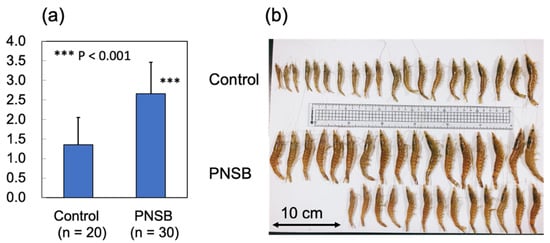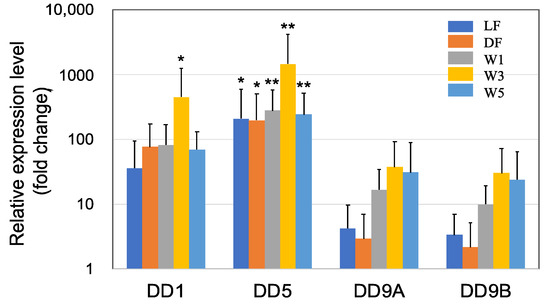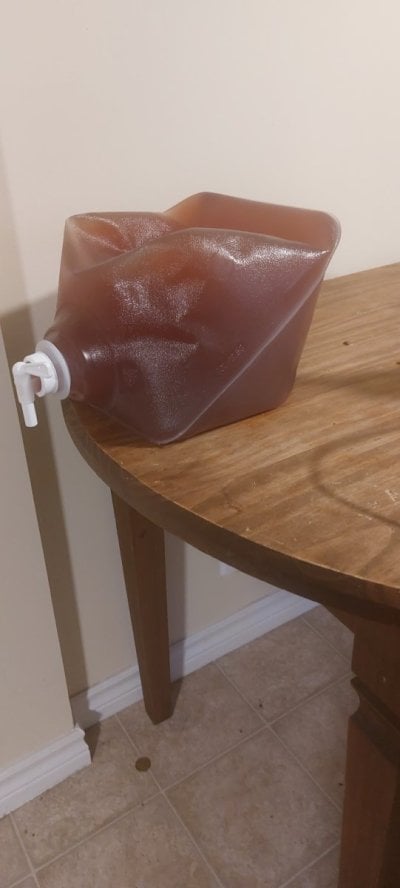- Joined
- Aug 20, 2016
- Messages
- 523
- Reaction score
- 609
Hi @Kenneth Wingerter
I listened to your talk at Reefbum this week and am still trying to digest all the information given.
I would like to pick your brain about the use and benefit as a food source.
I googled up how shrimp farms are using Purple Non-Sulfur Bacteria and linked the article here:

Figure 5. Effect of R. sulfidophilum KKMI01 on the growth of kuruma shrimp (M. japonicus) in long-term outdoor 200-ton aquaria experiment. (a) Average body weights of control (n = 20) and PNSB-treated (n = 30) shrimp 70 days after the start of the experiments. Values represent means ± S.D. Asterisk (***) indicates significant difference with control at p < 0.001. (b) Photograph of control and PNSB-treated shrimp.
That is a significant difference in growth size for shrimps.
However, I wonder how one can attain similar results from corals. I mean there are other independent variables such as non ideal tank parameters. IF given ideal tank parameters though, can you correct what I think is occurring with PNS bacteria and our corals?
I have better success at reducing my PO4 level using Tropic Marin Carbon Source as opposed to acetic acid even while using PNS Probio as my bacteria.
I admit I would seed my tank about once a week with PNS Probio and Yellow Sno as Vitamin B source for the PNS Probio bacteria. Therefore I never really gave the PNS Probio a chance to prove itself as a constant food supply for the corals.
1. On the podcast you mentioned we have to regularly seed the bacteria in our tank because the bacteria grows best in anaerobic condition even though it can survive in aerobic conditions. Just out of curiosity, do you have an idea of how much better your PNS grows in anaerboic vs aerobic conditions? I am thinking of seeding brand new biocubes/biospheres with PNS bacteria. I am hoping this will create the PNS rossetts biofilm you mentioned from the slides. I plan to put 20 biocubes with sterile fresh water in a sterile jar seeding it with PNS bacteria as well as Yellow Sno. What do you think of this method of seeding the biocubes ? How many days should I let it sit in the sterile container?
2. I was surprised Yellow Sno was not mentioned in the podcast. Can just seeding with PNS Probio bacteria in our tank grow the bacteria without Vitamin B?
3. Just like how you mentioned PNS bacteria grows best in anaerobic condition. You mentioned PNS bacteria does not need Nitrogen because they can fix their own nitrogen from the air.
What do you think will make these bacteria grow best though? Lou Ekus from Tropic Marin mentioned corals prefer Ammonium over Nitrate. Fish excrete urea/ammonia. Does PNS grow better using ammonium vs having to Nitrogen fix from the air? The reason I am asking this is that if my reef tank is a "closed system", I don't think I can bring much Nitrogen gas into the anaerobic PNS bacteria laden biocubes. I have very low Nitrate levels
4. I understand how PNS bacteria lives and help feed in a SPS coral polyp. However can you help explain how these bacteria will feed my mushroom/soft corals? Do they reside somewhere in their soft tissue? Where does the PNS bacteria reside in an LPS coral? Does LPS grow well from bacterioplanktons as well?
As always thank you for helping me out with your products.
I listened to your talk at Reefbum this week and am still trying to digest all the information given.
I would like to pick your brain about the use and benefit as a food source.
I googled up how shrimp farms are using Purple Non-Sulfur Bacteria and linked the article here:

Probiotic Effects of a Marine Purple Non-Sulfur Bacterium, Rhodovulum sulfidophilum KKMI01, on Kuruma Shrimp (Marsupenaeus japonicus)
Purple non-sulfur bacteria (PNSB) are used as probiotics in shrimp aquaculture; however, no studies have examined the probiotic effects of PNSB in shrimp at the gene expression level. In this study, we examined the effects of a marine PNSB, Rhodovulum sulfidophilum KKMI01, on the gene expression...
 www.mdpi.com
www.mdpi.com

Probiotic Effects of a Marine Purple Non-Sulfur Bacterium, Rhodovulum sulfidophilum KKMI01, on Kuruma Shrimp (Marsupenaeus japonicus)
Purple non-sulfur bacteria (PNSB) are used as probiotics in shrimp aquaculture; however, no studies have examined the probiotic effects of PNSB in shrimp at the gene expression level. In this study, we examined the effects of a marine PNSB, Rhodovulum sulfidophilum KKMI01, on the gene expression...
Probiotic Effects of a Marine Purple Non-Sulfur Bacterium, Rhodovulum sulfidophilum KKMI01, on Kuruma Shrimp (Marsupenaeus japonicus)

Figure 5. Effect of R. sulfidophilum KKMI01 on the growth of kuruma shrimp (M. japonicus) in long-term outdoor 200-ton aquaria experiment. (a) Average body weights of control (n = 20) and PNSB-treated (n = 30) shrimp 70 days after the start of the experiments. Values represent means ± S.D. Asterisk (***) indicates significant difference with control at p < 0.001. (b) Photograph of control and PNSB-treated shrimp.
That is a significant difference in growth size for shrimps.
However, I wonder how one can attain similar results from corals. I mean there are other independent variables such as non ideal tank parameters. IF given ideal tank parameters though, can you correct what I think is occurring with PNS bacteria and our corals?
I have better success at reducing my PO4 level using Tropic Marin Carbon Source as opposed to acetic acid even while using PNS Probio as my bacteria.
I admit I would seed my tank about once a week with PNS Probio and Yellow Sno as Vitamin B source for the PNS Probio bacteria. Therefore I never really gave the PNS Probio a chance to prove itself as a constant food supply for the corals.
1. On the podcast you mentioned we have to regularly seed the bacteria in our tank because the bacteria grows best in anaerobic condition even though it can survive in aerobic conditions. Just out of curiosity, do you have an idea of how much better your PNS grows in anaerboic vs aerobic conditions? I am thinking of seeding brand new biocubes/biospheres with PNS bacteria. I am hoping this will create the PNS rossetts biofilm you mentioned from the slides. I plan to put 20 biocubes with sterile fresh water in a sterile jar seeding it with PNS bacteria as well as Yellow Sno. What do you think of this method of seeding the biocubes ? How many days should I let it sit in the sterile container?
2. I was surprised Yellow Sno was not mentioned in the podcast. Can just seeding with PNS Probio bacteria in our tank grow the bacteria without Vitamin B?
3. Just like how you mentioned PNS bacteria grows best in anaerobic condition. You mentioned PNS bacteria does not need Nitrogen because they can fix their own nitrogen from the air.
What do you think will make these bacteria grow best though? Lou Ekus from Tropic Marin mentioned corals prefer Ammonium over Nitrate. Fish excrete urea/ammonia. Does PNS grow better using ammonium vs having to Nitrogen fix from the air? The reason I am asking this is that if my reef tank is a "closed system", I don't think I can bring much Nitrogen gas into the anaerobic PNS bacteria laden biocubes. I have very low Nitrate levels
4. I understand how PNS bacteria lives and help feed in a SPS coral polyp. However can you help explain how these bacteria will feed my mushroom/soft corals? Do they reside somewhere in their soft tissue? Where does the PNS bacteria reside in an LPS coral? Does LPS grow well from bacterioplanktons as well?
As always thank you for helping me out with your products.

















